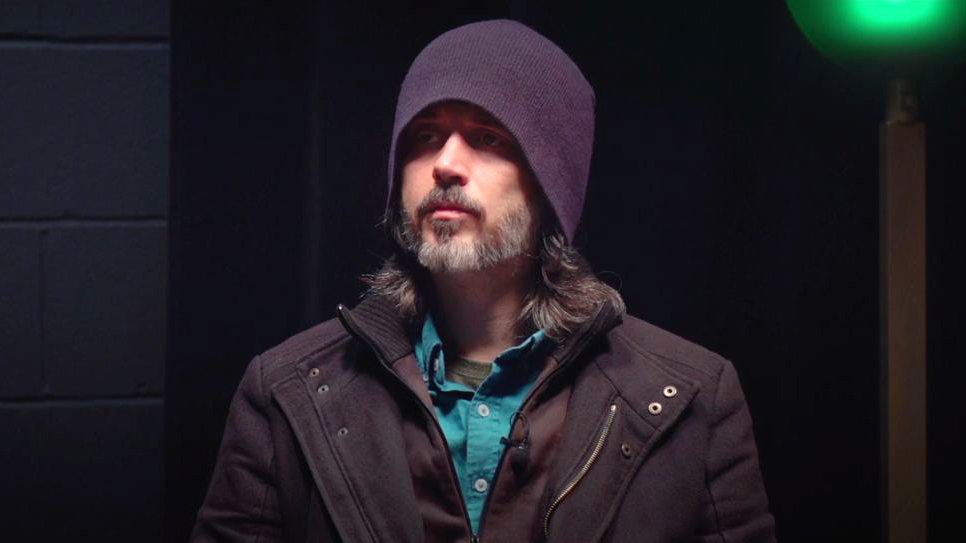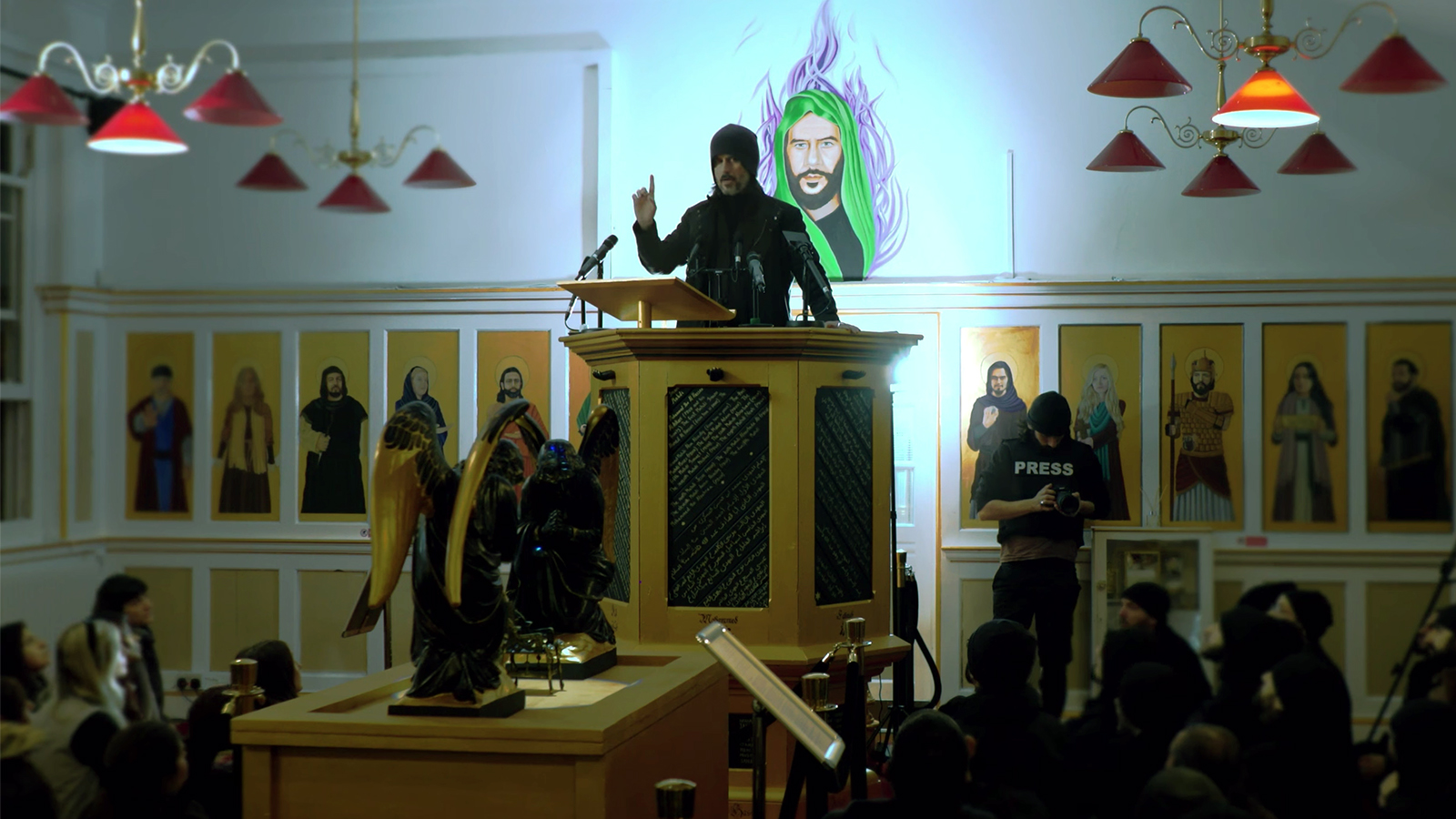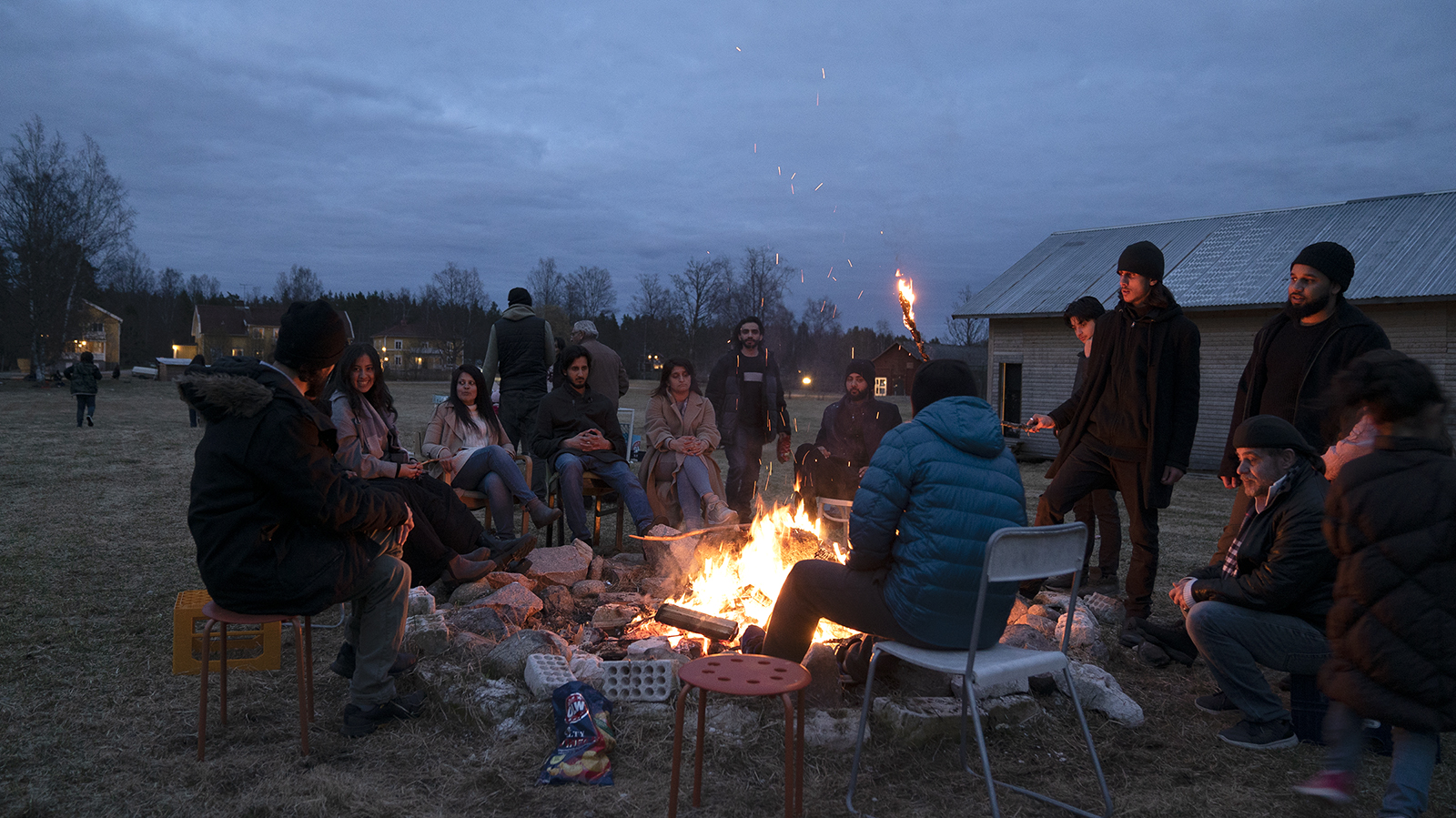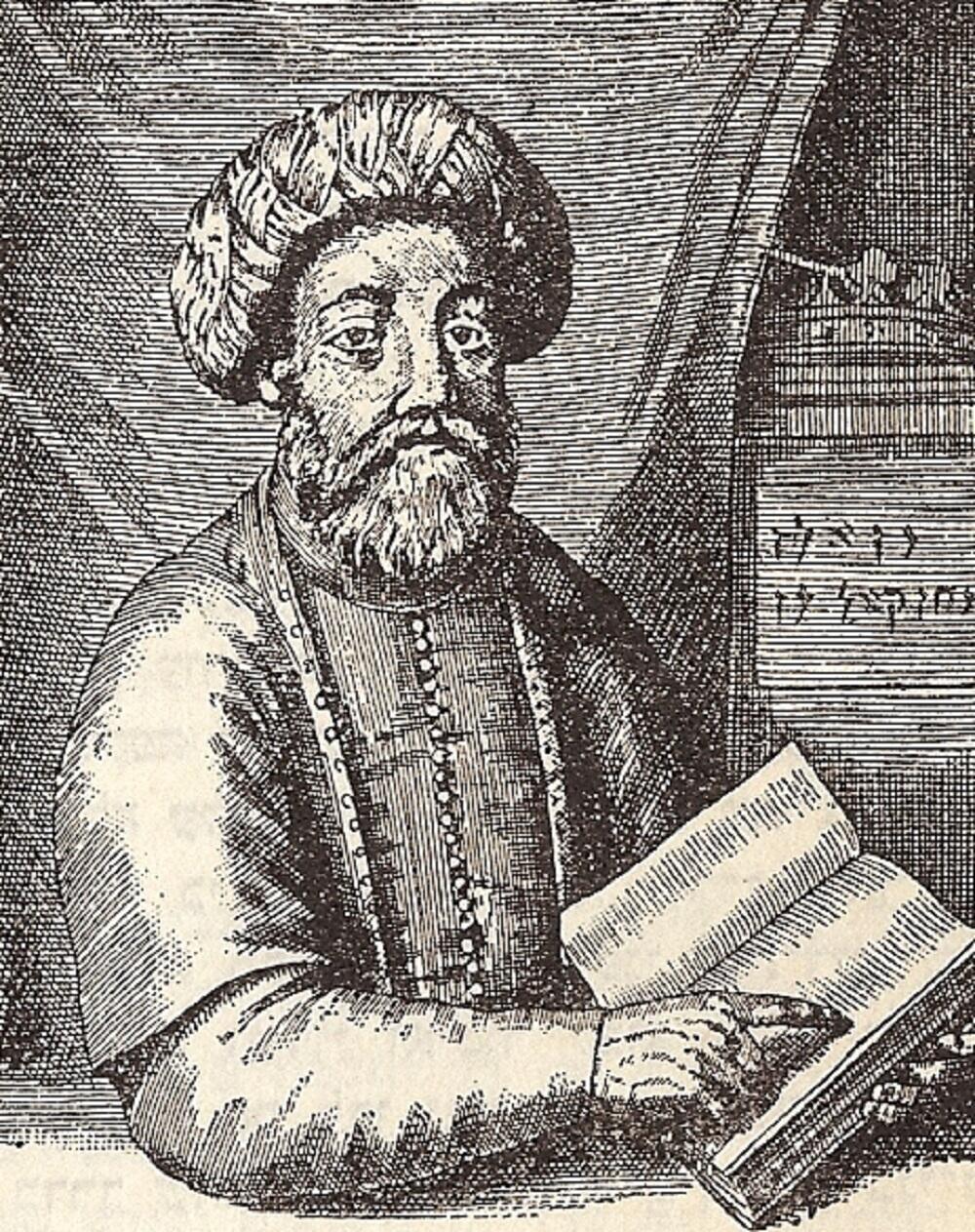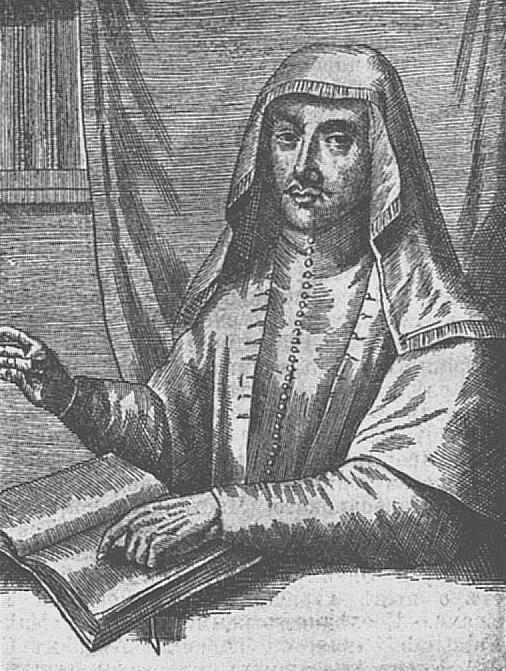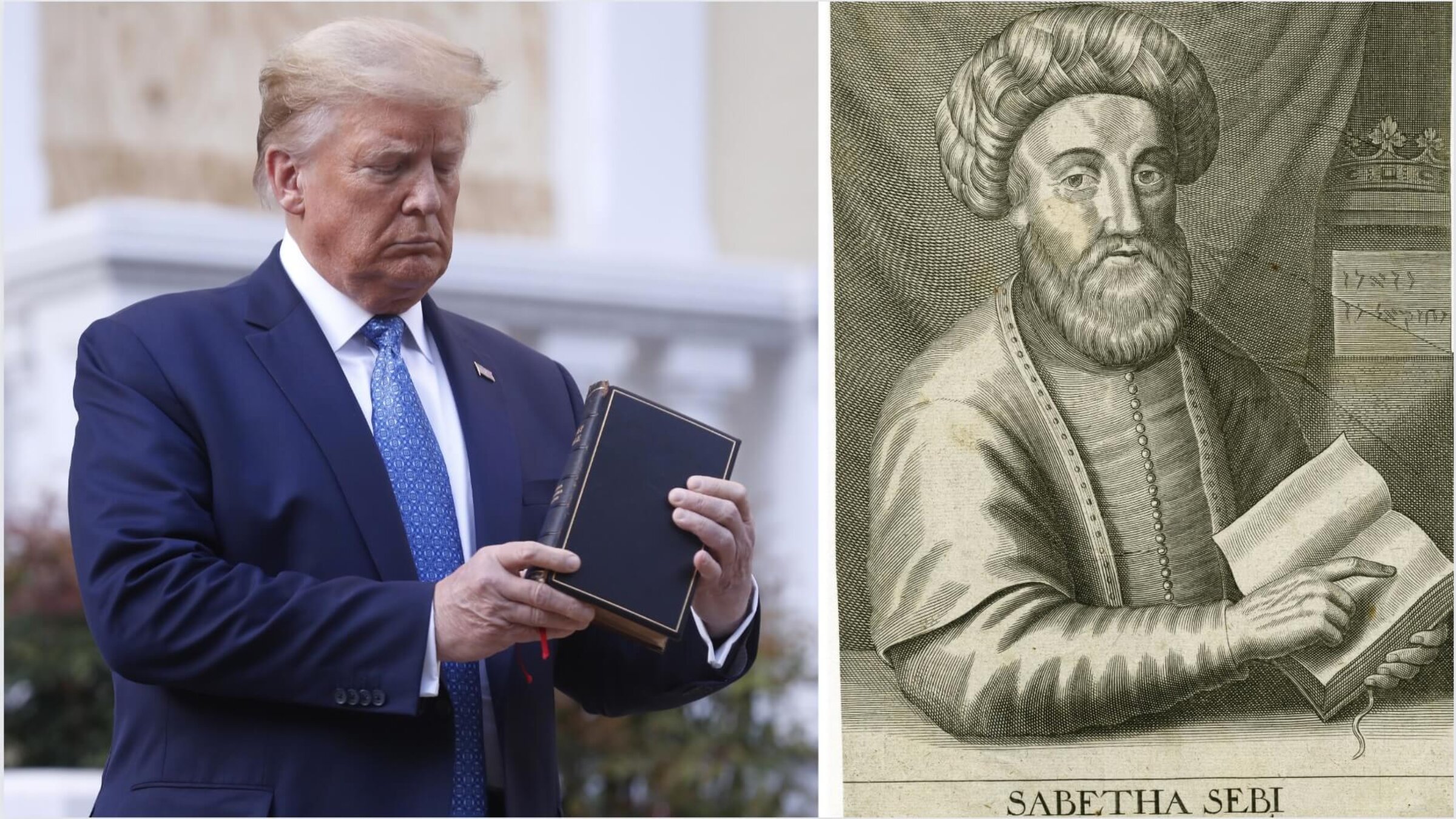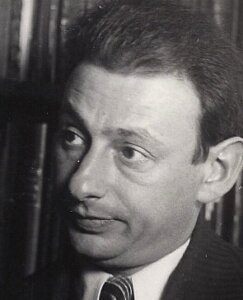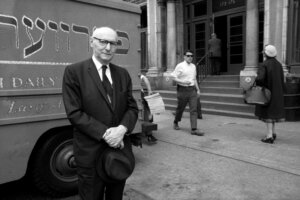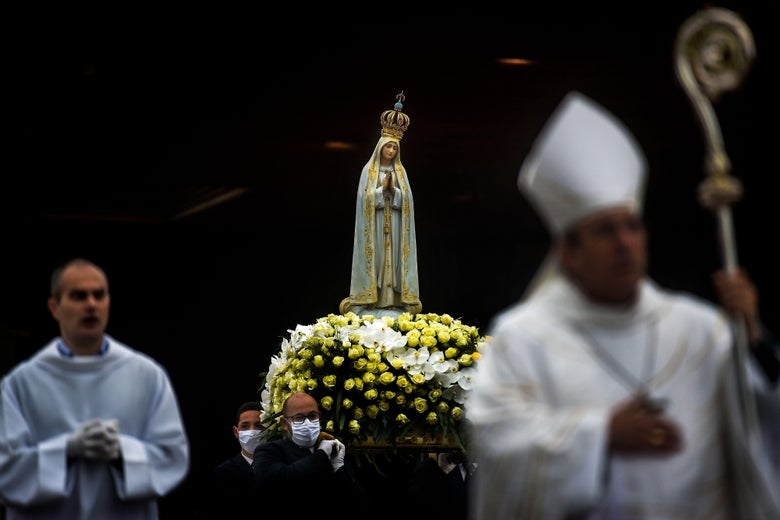HERESIOLOGY
The Origins of the Counterculture Movement: A Gathering of Anarchists, Occultists and Psychoanalysts for a New Age
Cynthia ChungNovember 21, 2021
The third part of Cynthia Chung’s series discusses how Aldous Huxley’s form of ideological spirituality went on to shape the drug-counter-culture movement.“…’If the first half of the twentieth century was the era of the technical engineers, the second half may well be the era of the social engineers’ – and the twenty-first century, I suppose, will be the era of the World Controllers, the scientific caste system and Brave New World…The older dictators fell because they could never supply their subjects with enough bread, enough circuses, enough miracles and mysteries… Under a scientific dictatorship education will really work – with the result that most men and women will grow up to love their servitude and will never dream of revolution. There seems to be no good reason why a thoroughly scientific dictatorship should ever be overthrown.”
– Aldous Huxley’s “Brave New World Revisited”
This new era of the World Controllers where revolution will become irrelevant since the masses will come to love their servitude is referred to as the “Ultimate Revolution” by Huxley, a clearly borrowed phrase from
H.G. Wells’ 1933 book “The Shape of Things to Come: The Ultimate Revolution.”
It is the
ultimate revolution, since it will be the last of the revolutions, the most perfect revolution that will end any need for further change, since we will have finally achieved a stable world order.
It will be the beginning of the era of the World Controllers and it will be regarded as a modern Utopia, for everyone will be supposedly content within the controlled reality that shapes their caste, a caste that has been scientifically determined.
Anyone wishing to understand today’s Great Reset agenda which professes to radically alter humanity’s values amidst a vast systemic collapse, would do well to see how these ideas took root well over a century ago in a strange village in Switzerland.
[This paper is the third part to a four-part series. See
Part I and
Part II.]
Monte Verità (The Mountain of Truth): A Modern Utopia
In 1900, artists Henri Oedenkoven and Ida Hofmann founded an anarchist, bohemian, nudist, sun-worshipping, vegetarian artists’ colony within the small village of Ascona, Switzerland, and named it Monte Verità, meaning “mountain of truth.”
The concept for Monte Verità
began with the arrival of Mikhail Bakunin, the recognized leader of international anarchism, in 1870, when he moved to Locarno, Switzerland (less than 2 km away from Ascona) and lived there for several years, attracting expressionist writers, artists, anarchists and radicals who took up residence in the surrounding region. Bakunin’s influence in the area would be the inspiration for the formation of a commune years later, Monte Verità.
Monte Verità became the international meeting place for all those who rebelled against science, technology, and the rise of the modern industrial nation-state. On the surface it was and is popularly regarded as a nature cure resort, offering treatments that include a vegetarian diet, health foods, fasting, earth cures, water cures, nude sun baths, nude air baths, and nature hikes.
The region of Ascona attracted an eclectic array of guests, from anarchists, theosophists, communists, psychoanalysts, vegetarians, rhythmic dancers, nudists, and bohemians alike. Among the notable regulars at Ascona were Herman Hesse, Carl Jung, Peter Kropotkin (who became an anarchist, after joining the watchmakers of Jura in Switzerland, who were the disciples of Bakunin), Rudolf Steiner, D.H. Lawrence (a mentor of Aldous Huxley), and the list goes on.
It had developed such a strong reputation as a Utopia, that even H.G. Wells was smitten, placing his utopia in Ticino, the Italian region of Ascona in his “Modern Utopia” (1905), and “In A World Set Free,” (1914) setting the rebirth of society in Lago Maggiore near Ascona.
In 1905, Otto Gross (an early disciple of Sigmund Freud) moved to Ascona and quickly became a sort of ruler amongst the diverse membership. Otto Gross was considered a major force in the burgeoning field of psychoanalysis, and also became a key figure in the anarchist, psychoanalytic and spiritual circles. He would conduct psychoanalysis sessions, where he would advise his “subjects” to act out their sexual fantasies, often with himself and/or his wife. Gross wanted to revive pagan mysticism, with the freedom to engage in heavy doses of sex orgies.
In 1908, Gross’ addiction to morphine and cocaine (to which
his mentor Freud shared), would lead him to commit himself to the Burghölizi Mental Hospital in Zurich, where he was put under the care of Carl Jung.
At Burghölizi, Jung diagnosed Gross as a schizophrenic. Over the course of the therapy, however, Carl Jung claimed his entire worldview had changed when he attempted to analyse Gross and partially had the tables turned on him. (1) This led Jung to visit Ascona for himself, whereupon he adopted the ideas of Gross, turning to pagan sun worship and sun mythology.
Herman Hesse and Carl Jung
are described as among the many who had found themselves under Otto Gross’ spell. Historian Arthur Mitzman writes in his “Anarchism, Expressionism and Psychoanalysis,” that:
“Otto Gross, as Jung’s guru throughout most of this evolution and a man capable of exerting a remarkable charisma among the Bohemian artists and outcasts in Munich, Berlin, Ascona and Vienna, must be considered the principal source of the ideas inspiring Jung and his friends in the decade before 1920.”
What was Otto Gross’ philosophy?
Gross believed that in order to achieve freedom, one must never repress any desire. Nothing was forbidden no matter how seemingly irrational, even the encouragement of suicide if his patient so desired. Gross believed that Western civilization lay at the centre of this oppression of the individual’s freedom. Those who were coming to Monte Verità were ultimately all sick, and they were made sick by the repressive ideals and values of Western civilization.
At Monte Verità, Gross promised to cure them by arousing the animal desire from within, promising to free them from their inhibitions, fears, and self-imprisonment. It was uncommon for Gross not to have sexual intercourse with his treating patient as part of the prescribed therapy.
Gross became increasingly political, particularly in Ascona, where
Jung himself writes, Gross had planned “to found a free college from which he thought to attack Western civilization, the obsessions of inner as well as outer authority, the social bonds which these imposed, the distortions of a parasitic form of society, in which everyone was forced to live from everyone else to survive.”
One particular individual named Max Weber found himself
devoting his passion to Otto Gross in the construction of this free college. Although this project didn’t become reality as these reformers hoped (Otto Gross became too unstable to lead anything), it is interesting to note Weber’s career as a co-founder of the Frankfurt School in 1923. Among the goals of the new school was the merging of Freudian Psychoanalysis with Marxist theories of sociology in order to engage in an international cultural war that would create the conditions for an ultimate global revolution. The Frankfurt School, whose influence vastly shaped much of the post WWII period, Max Weber, George Lukacs, Theodor Adorno, Max Horkheimer and other misanthropes pioneered the growth of Critical Theory, the “Authoritarian Personality”, political correctness and other intellectual viruses.
Gross would
encourage the suicides of Lotte Hattemer (in 1906) and Sophie Benz (in 1911) as the only way to liberate themselves. They had also been among his many, many lovers.
He had diagnosed the two women as having suffered from incurable mental illness (dementia praecox). He had
left the poison with which Lotte Hattemer killed herself lying within her reach. He
informed psychiatrists in 1913 (during one of his many visitations to the asylum between 1912 and 1920), “When I could no longer intervene analytically, I had a duty to poison her,” in reference to Sophie Benz.
Gross is also
quoted commenting “A beautiful death is better than a low probability of cure.”
Before Jung, it had been the expectation of Freud that Gross would be his heir in the psychoanalytic field, however, Gross was becoming increasingly unstable.
By 1912, Gross was forcibly interned in a psychiatric institution in order to avoid being tried for murder and assisting suicide. Otto’s father, Professor Hans Gross who is considered the founder of criminology, was behind this intervention.
In 1913, at the lunatic asylum in Tulln, Gross is
recorded saying:
“My whole life was focused on overthrowing authority, for example that of the father. In my view there is only the maternal right, the right of the horde…So when I’ve finished my work, let come what may. Actually, I would like to live to the age of forty-five, and then go under…preferably participating in an anarchist assassination…That would be the most beautiful way.”
Some have credited Otto Gross as the founding grandfather of the 20th century counterculture, a pioneer as the first rock n roller, hard punk lifestyle so to speak. And he did not disappoint. Gross died in 1920, at the age of forty-three, a few days after being found in the street, near-starved and freezing after eight years of going in and out of asylums, largely revolving around drug addiction. Not even Sid Vicious could ask for a more apt role model.
The same year that Gross was forcibly interned in a psychiatric institute, the start of his downward spiral of “individual freedom” to do whatever one wishes, Jung published “The Psychology of the Unconsciousness,” where he began to spiritualize the psychoanalysis movement and wrote of sun worship and sun mythology as the original natural religion of the Aryan people. (2)
It gave an academic respectability to Ascona’s Aryan sun religion, and he began to receive followers from all over the world, who wanted to experience the mythos of their own unconsciousness.
With the publishing of “The Psychology of the Unconsciousness,” a split began to develop between Jung and Freud.
In the years that followed, it became fashionable among banking and intelligence circles, to go under analysis with Jung. In 1913, Edith Rockefeller traveled to Zurich to be treated for depression by Carl Jung and contributed generously to the Zurich Analytical Psychology Club. She would later become a Jungian analyst with a full-time practice in the States attracting many socialite patients. She also paid for Jung’s writings to be translated into English in order to help disseminate his ideas. (3)
Paul (son of Andrew Mellon, co-founder to the Mellon National Bank) and Mary Mellon financed the Bollingen Foundation dedicated to disseminating Jung’s work. In 1957,
Fortune magazine estimated that Paul Mellon, his sister Ailsa, and his cousins Sara and Richard Mellon were all among the richest eight people in the United States with fortunes between $400-700 million each (around $3.7-6.5 billion in today’s dollars).
Through these initiatives, there was a spill over of the ideas of Ascona into the circles of the rich and powerful. British central banker Montagu Norman and members of the Dulles family also went under Jungian analysis.
Allen Dulles would be at the center of the formation of a vicious CIA program named MKULTRA during the Cold War. The relevance of this will be made clear in part 4 of this series.
Ordo Templi Orientis: The Secret Doctrine of “Sex Magic”
“Do what thou wilt shall be the whole of the Law”
– The core tenet of the Ordo Templi Orientis
Ascona was considered sacred ground for occultists going back hundreds even thousands of years, the area containing ruins of ancient ritual sites and artifacts.
In 1916, Theodor Reuss, under the sponsorship of Henri Oedenkoven and Ida Hofmann (the founders of Monte Verità), arrived in Ascona. Reuss had been building a Masonic empire and he wanted to transfer its headquarters to the Swiss village. While in Basel, Switzerland, he established the “Anational Grand Lodge and Mystic Temple” of Ordo Templi Orientis (O.T.O.), and the “Hermetic Brotherhood of Light” at Monte Verità.
The Ordo Templi Orientis is the ecclesiastical arm of the Ecclesia Gnostica Catholica (E.G.C.), dedicated to the advancement of Light, Life, Love and Liberty through alignment with the Law of Thelema. The Law of Thelema follows the mandate that each person follow their True Will to attain fulfillment in life and freedom from restriction of their nature.
Aleister Crowley is
credited as the early developer of Thelema as a spiritual philosophy and religious movement. Its maxim is: “Do what thou wilt shall be the whole of the law”.
It was to herald a new age.
Such a maxim was in full accord with the anarchist views of Mikhail Bakunin, followed by Otto Gross and those he influenced. The founders of Monte Verità were very clear in what they intended as a desired ideology for their followers.
Reuss would be issued warrants allowing for him to operate three systems of high-grade Masonry: The Ancient and Primitive Rite of Memphis, The Ancient and Primitive Rite of Mizraim, and The Ancient and Accepted Scottish Rite. (4)
Along with Reuss’ control of the Swedenborg Rite, the Rites combined provided Reuss with a complete system of Masonic initiation, independent of the regular British Masonic system.
In 1905, out of this new system of Masonry, (5) which was the Ordo Templi Orientis (O.T.O), Reuss formed the Hermetic Brotherhood of Light, as a branch of O.T.O. which was located at Monte Verità. Reuss declared himself the Outer Head of the Order.
The Ordo Templi Orientis (O.T.O) distinguished itself by allowing membership to women, and advocating a new secret doctrine called Sex Magic.
Sex Magic is the corrupted Western version of Kundalini Yoga or Tantric Yoga of the East. It is sometimes referred to, in the translation of Sanskrit into English, as “Serpent Power.”
In 1912, Reuss conferred Aleister Crowley the IX° and appointed him National Grand Master General X° for the O.T.O. in the United Kingdom of Great Britain and Ireland by charter dated June 1, 1912.
In August 1917, Reuss issued a manifesto for his Anational Grand Lodge (O.T.O), called “Verità Mystica.” He then held the “Anational Congress for Organizing the Reconstruction of Society on Practical and Cooperative Lines” at Monte Verità August 15–25, 1917. He wanted to create a new ethic, a new social order, and a new religion, to be achieved through the establishment of utopian-bohemian colonies and settlements throughout the world.
By 1921, Crowley succeeded Reuss, to become the Outer Head of the Order. Crowley had become notorious for his excesses with drugs and women and for his practice in Sex Magic which he held as of high occult importance. He became known as “The Great Beast 666” and “The Wickedest Man in the World” and would become an icon for the counterculture movement.
Sonnenkinder: The Children of the Sun
Another theme of Monte Verità that hopefully has become apparent to the reader is the worshipping of the sun. This appears to have been largely influenced by the work of
Johann Jakob Bachofen, whose theory of cultural evolution, in his 1861 work “Das Mutterrecht,” was described as four phases: 1) wild nomadic phase (proto-Aphrodite), 2) matriarchal lunar phase (early Demeter), 3) transitional phase (original Dionysos), 4) the patriarchal solar phase called The Apollonian, in which all trace of the Matriarchal and Dionysian past are eradicated and modern civilisation emerges.
Bachofen’s cultural evolution theory greatly influenced Otto Gross, and thus was adopted as a central philosophy of Monte Verità. As already mentioned, Carl Jung’s work became very much focused on this Aryan sun-worshipping religion to which he wrote “Psychology of the Unconscious: a study of the transformations and symbolisms of the libido, a contribution to the history of the evolution of thought.”
D.H. Lawrence had also been
forever changed by the influence of Otto Gross and Herman Hesse, the latter whom Timothy Leary
has credited as the Patron Saint of Cyberpunk (Leary was “turned on” to Hesse by Aldous Huxley). More on this in an upcoming paper.
Although Aldous Huxley would first meet D.H. Lawrence in 1915, it would be during the period of 1926-1930, that they would become close friends (1930 was the year D.H. Lawrence died at the age of forty-four).
The timing could not have been more ripe it seems for Aldous’ introduction into mysticism, having just written
“Those Barren Leaves” in 1925 whose title was derived from William Wordsworth’s poem “The Tables Turned” to which it ends with:
Enough of Science and of Art;
Close up those barren leaves;
Come forth, and bring with you a heart
That watches and receives.
Aldous concludes that for all the high education of the cultural elite, they are nothing but sad and superficial individuals. This was a rather typical commentary from the “Lost Generation” that was to form as a consequence of the despair after WWI and the belief that civilisations striving towards industrialisation and scientific progress had been the cause of this seemingly pointless world war. And that it was just a taste of what awaited humanity in the future if it did not correct its ways.
Aldous had abandoned the “false altars” of knowledge through science and art. He was ready for entry into the secret arts, and D.H. Lawrence would be his guide. After all, his grandfather T.H. Huxley was the one to coin the term “agnosticism,” thus it was only natural that he keep an open mind…
It should also not be lost on the reader the relevance of Aldous’ uniting of his grandfather’s promotion of Darwinian evolution and that of Bachofen’s cultural evolution. (See
Part 2 of this paper.)
Through D.H. Lawrence, Aldous was taught Lawrencian metaphysics. At the core of this was that self-division was the source of the woes of western civilisation. A dualism in which modern life had caused the splitting of humanity into two conflicting forces; passion and reason, that were always at war within the individual. As a way to save humanity from reason’s tyranny dominating over passion, Lawrence preached the cult of the body and of the “dark night-life of the blood.” He believed this to be the only way to return humankind to its true heritage of the emotions.
The only way to live as a whole man, was to abandon “mental self-consciousness” and rediscover instinct, to unify oneself, to put back the fragmentation that modern civilisation had caused. According to Lawrence this division within an individual was the root of all evil, and that the natural appetite, spontaneous instinctive desires, were the pure and the good. That it was the imagination, the intellect, its moral principles, its tradition and education that were the corrupting influence of modern civilization.
Through Lawrence, Aldous Huxley, Gerald Heard and Christopher Isherwood would be forever changed by the ideas of Ascona. They would later be
called the Sonnenkinder (The Children of the Sun), a term that came from Johann Jakob Bachofen and would become the leading influence that would shape the Human Potential Movement and the Esalen Institute.
Though it is beyond the scope of this paper to go through in detail how Ascona propagated a perversion of aspects of Indian philosophy (Herman Hesse played a large part in introducing this into Ascona), it should be noted that there is consistently an overlap with the Aryan sun-worship religion and certain aspects of Indian philosophy within Ascona, the Ordo Templi Orientis and the Sonnenkinder. This especially revolves around the Bardo Thodol (Liberation Through Hearing During the Intermediate State), otherwise known as the Tibetan Book of the Dead.
The Tibetan Book of the Dead focuses on the experiences that the consciousness has after death, in the bardo, the interval between death and the next rebirth.
Through the lens of Lawrencian metaphysics, the Sonnenkinder would adopt the philosophies of the Tibetan Book of the Dead to their core. Aldous made no secret that during his last years of life, the book had become a sort of bible for him. Aldous would also
introduce Timothy Leary to this, which in turn became a major influence on the counterculture guru.
According to Timothy Leary, his co-written book “The Psychedelic Experience,” published in 1964 was
loosely based on the Tibetan Book of the Dead. Leary and his co-writers, described the Tibetan Book of the Dead as “a key to the innermost recesses of the human mind, and a guide for initiates, and for those who are seeking the spiritual path of liberation.”
It should also be noted that there is a great deal of overlap with the Ascona philosophy of Aryan sun-worship and that of
Alice Bailey who was influenced by the Theosophical Society of Madame Blavatsky, a sort of sister branch of Monte Verità. Bailey’s first work was titled “Initiation, Human and Solar.”
In Bailey’s “
Esoteric Psychology II,” heavily influenced by Madame Blavatsky’s “The Secret Doctrine,” she references the mystery of the descent of “fall” to Earth of the rebellious angels – the solar angels or agnishvattas, to which Lucifer is the best known representative. And that the only true evil is the sin of separatism, to which she refers “the mind is the slayer of the Real. Slay thou the slayer.”
Bailey has stated that the majority of her works have been
telepathically dictated to her by a Master of Wisdom, initially referred to as “the Tibetan” or by the initials “D.K.,” later identified as Djwal Khul.
In 1922 she co-founded the
Lucis Trust with her husband (originally called “Lucifer Publishing Company) which has played a major role within the United Nations to this day.
It should also be noted that Alice Bailey’s interpretation of the mythology of Lucifer has a great deal of overlap with that of the
Scottish Rite. Theodor Reuss, followed by Aleister Crowley
oversaw a branch of the Scottish Rite in Germany, and as already discussed Ascona had become a headquarter for the Ordo Templi Orientis, and thus we come around full circle.
Children of the Sun in this context, could also be connoted as Children of the Solar-Angels; and thus the Children of Lucifer.
In the words of Alice Bailey, we must add “darkness unto light so that the stars appear, for in the light the stars shine not, but in the darkness light diffused is not, but only focussed points of radiance.” (6)
Thus we must bring forth the darkness…
In 1935, Crowley founded the Agape Lodge No. 2 in Los Angeles.
In 1937, Aldous would move with his family and his fellow Sonnenkinder Gerald Heard to Hollywood, where he would remain until his death. Christopher Isherwood would make the move to Hollywood in 1939.
And just like that, the teachings of Ascona in Hollywood became a primary focus of Crowley and the Sonnenkinder, and together they would dominate the scene out of which the counterculture movement would be born.
[Part 4 of this series will discuss how the ideas of Ascona shaped Hollywood, the music scene and the Esalen Institute, as well as the role of the Tavistock Institute and the Frankfurt school’s in shaping the mass psychology of the counterculture movement.]
 Also by this author
Also by this authorCynthia CHUNG
Cynthia Chung is a lecturer, writer and co-founder and editor of the Rising Tide Foundation (Montreal, Canada).
The War on Science and the 20th Century Descent of Man
COP26 & The Great Reset: The Not So Glorious Prospect of Owning Nothing and Passing a Cold, Dark WinterThe author can be reached at
https://cynthiachung.substack.com/(1) Ronald Hayman, A Life of Jung (1999)
(2) Noll, Richard. The Aryan Christ: The Secret Life of Carl Jung
(3) Ibid
(4) Reuss received letters-patent as a Sovereign Grand Inspector General 33° of the Cernau Scottish Rite from John Yarker dated September 24, 1902 for the Masonic Rites of Memphis and Mizraim and a branch of the Scottish Rite in Germany with charters from Yarker. On the same date, Yarker issued a warrant to Reuss to operate a Sovereign Sanctuary 33° of the Scottish, Memphis and Mizraim rites. The original document is not extant, but a transcript of this warrant was published in 1911 in Reuss’s newsletter, The Oriflamme. Yarker issued a charter confirming Reuss’s authority to operate said rites on July 1, 1904; and Reuss published a transcript of an additional confirming charter dated June 24, 1905.
(5) Reuss announced a constitution for this new, enlarged Ordo Templi Orientis on June 21, 1906 in London.
(6) Alice Bailey, “The Rays and the Initiations”


